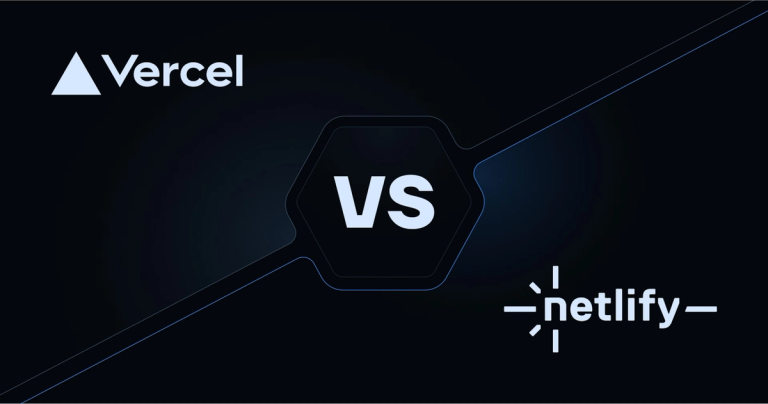Playwright testing on CI using Github Actions and Vercel
In this article, we will discuss how to monitor your website's performance using Playwright.

Intro
If you are new to Playwright, please check out the previous article. If you are new to the concept of CI/CD (Continuous Integration and Continuous Deployment), don't worry, this article doesn't require any special knowledge and introduces each concept step by step.
Overview of GitHub Actions
GitHub Actions is a CI/CD tool integrated directly into GitHub. It allows developers to automate their workflows for building, testing, and deploying code.
Key concepts:
- workflow: A workflow is an automated process made up of one or more jobs. It's defined by a YAML file in the
.github/workflowsdirectory of your repository. Workflows can be triggered by various events, such as pushing code, creating pull requests, or on a schedule. - job: A job is a set of steps executed on the same runner. Jobs run in parallel by default, but can be configured to run sequentially if dependencies exist between them.
- step: A step represents a single task to be performed, such as running a command or using an action.
- action: Actions are custom applications for the GitHub Actions platform that can be used to perform complex tasks. Actions can be created by anyone and shared via GitHub Marketplace. Action can have inputs and outputs.
- runner: Runners are the servers that run your workflows. GitHub provides hosted runners with commonly used software preinstalled, or you can use self-hosted runners.
- event: A specific activity that triggers a workflow to run. Examples include push, pull_request, schedule, and workflow_dispatch.
- artifact: Files generated during a workflow that can be retained and shared between jobs or used as a record of workflow execution. Artifacts are useful for persisting build outputs, test results, and other files for later analysis or download.
Default example
Now we can look at the example from the official documentation and understand what's going on there.
# Workflow name
name: Playwright Tests
# Trigger the workflow on push and pull request events to the main or master branches
on:
push:
branches: [ main, master ]
pull_request:
branches: [ main, master ]
jobs:
# Job name
test:
# Set a timeout of 60 minutes for the job
timeout-minutes: 60
# Use the latest Ubuntu runner
runs-on: ubuntu-latest
steps:
# Step to check out the repository
- uses: actions/checkout@v4
# Step to set up Node.js environment
- uses: actions/setup-node@v4
# Inputs for the action
with:
node-version: 18 # Specify Node.js version 18
# Step to install project dependencies using npm
- name: Install dependencies
run: npm ci
# Step to install Playwright browsers along with necessary dependencies
- name: Install Playwright Browsers
run: npx playwright install --with-deps
# Step to run Playwright tests
- name: Run Playwright tests
run: npx playwright test
# Step to upload Playwright test report as an artifact
- uses: actions/upload-artifact@v4
if: ${{ !cancelled() }} # Upload only if the job is not cancelled
# Inputs for the action
with:
name: playwright-report # Name of the artifact
path: playwright-report/ # Path to the report
retention-days: 30 # Retention period for the artifact
This workflow is basic, but it works for almost everything except snapshots testing. Snapshot testing can be part of regression testing - you take a screenshot of a page/component as a reference (master branch or production) and compare it to the current version (changes in PR). This means that for this type of testing we first need to create control screenshots, then create test screenshots and compare them. We need a successful deployment of preview to start testing.
There are four main steps to consider here:
- preview deployment,
- run tests on deployed master branch,
- run tests on deployed current PR branch,
- upload artifact to see detailed report.
The simplest version would look like this.
.github/workflows/e2e-test.yml
name: Playwright Tests
on:
deployment_status:
jobs:
test:
timeout-minutes: 60
runs-on: ubuntu-latest
# We need a successful deployment of preview to start testing.
if: github.event.deployment_status.state == 'success'
steps:
- uses: actions/checkout@v4
- uses: actions/setup-node@v4
with:
node-version: 18
- name: Install dependencies
run: npm ci
- name: Install Playwright
run: npx playwright install --with-deps
- name: Create control screenshots
run: npx playwright test --update-snapshots
env:
# We should assign baseURL in playwright.config.ts to the value of this variable. You also need to set the action secret named E2E_MASTER_BRANCH_PREVIEW_URL to the URL of your deployed master branch.
PLAYWRIGHT_TEST_BASE_URL: ${{ secrets.E2E_MASTER_BRANCH_PREVIEW_URL }}
- name: Run Playwright tests
run: npx playwright test
env:
# In this case we can get the deployed preview URL from the event
PLAYWRIGHT_TEST_BASE_URL: ${{ github.event.deployment_status.target_url }}
- uses: actions/upload-artifact@v4
with:
name: playwright-report
path: playwright-report/
retention-days: 30
What are the potential downsides here? The most obvious one is that for each test, we re-run the test on the master branch to get screenshots. This is not very efficient. It is much better to run these tests once on the master branch, save the results, and then use them for all subsequent tests. Also, caching node_modules can save some time. Playwright caching itself is not easy, but we found a way to reduce the time using the official Docker image. We also added HTML report deployment and notifications for failed tests in Slack. For recurring tasks, we used composite actions.
We can still keep everything in one workflow, but we will have jobs that will be triggered by different events: master branch preview deployment and current branch preview deployment.
We will have two completly independent jobs:
- on master preview deployment: run tests to create control screenshots, save screenshots and node_modules as artifact,
- on current branch preview deployment: pull artifacts with screenshots and node_modules, run tests, upload artifact to see detailed report
Note: Cache may seem more natural to use as a storage for such things. But not quite. If we check the official documentation, we will see that for screenshots, for example, we cannot use cache. So if we can no longer use cache everywhere, the choice was made in favor of artifacts.
name: Playwright Tests
on:
deployment_status:
env:
PLAYWRIGHT_TEST_BASE_URL: ${{ secrets.E2E_MASTER_BRANCH_PREVIEW_URL }}
NEXT_PREVIEW_TOKEN: ${{ secrets.NEXT_PREVIEW_TOKEN }}
SLACK_INCOMING_WEBHOOK_URL_SNAPSHOTS: ${{ secrets.SLACK_INCOMING_WEBHOOK_URL_SNAPSHOTS }}
jobs:
create-screenshots-master:
timeout-minutes: 60
runs-on: ubuntu-latest
# Run only on successful deployment of your master branch preview. your-vercel-project should be replaced with the name of your project.
if: ${{ github.event.deployment_status.state == 'success' && github.event.deployment.environment == 'Production – your-vercel-project'}}
steps:
- name: Install dependencies
run: yarn --prefer-offline
# We use the official Docker image to speed things up
- name: Run Playwright tests
uses: docker://mcr.microsoft.com/playwright:v1.45.0-jammy
with:
args: npx playwright test --update-snapshots
# Delete all ts files to leave only images
- name: Prepare a screenshots folder
run: |
cd e2e
find . -name "*.ts" -type f -delete
cd ..
- uses: actions/upload-artifact@v4
with:
name: 'screenshots-master'
path: e2e/
retention-days: 7
- uses: actions/upload-artifact@v4
with:
name: node_modules
path: node_modules/
retention-days: 7
create-screenshots-pull-request:
timeout-minutes: 60
runs-on: ubuntu-latest
# Run only on successful deployment of your current branch preview. your-vercel-project should be replaced with the name of your project.
if: ${{ github.event.deployment_status.state == 'success' && github.event.deployment.environment == 'Preview – your-vercel-project' && github.event.deployment_status.deployment.ref != 'refs/heads/master'}}
steps:
# Find the ID of the last successful run. Where e2e-test.yml is the name of the workflow. And store it to a var run_id
- name: Get Run ID
id: get_run_id
run: |
# Fetch the latest run of the workflow
response=$(curl -X GET \
-H "Authorization: Bearer ${{ github.token }}" \
-H "Accept: application/vnd.github.v3+json" \
"https://api.github.com/repos/${{ github.repository }}/actions/workflows/e2e-test.yml/runs?status=success&branch=master&per_page=1")
# Extract the run ID from the response
run_id=$(echo "$response" | jq -r '.workflow_runs[0].id')
echo "run_id=${run_id}" >> $GITHUB_OUTPUT
- name: Print Run ID
run: |
echo "Latest Run ID: ${{ steps.get_run_id.outputs.run_id }}"
- name: Check if artifact with master screenshots exists
# Now we need to check if the run with the id has artifacts with screenshots. And store it to a var is_exist
if: steps.get_run_id.outputs.run_id != 'null'
id: check_screenshots_artifact
run: |
response=$(curl -s \
-H "Authorization: Bearer ${{ github.token }}" \
-H "Accept: application/vnd.github.v3+json" \
"https://api.github.com/repos/${{ github.repository }}/actions/runs/${{ steps.get_run_id.outputs.run_id }}/artifacts" \
| jq ".artifacts[] | select(.name == \"screenshots-master\")")
if [ "$(echo "$response" | jq -e '. != null')" ]; then
echo "The artifact exists."
echo "is_exist=true" >> $GITHUB_OUTPUT
else
echo "The artifact does not exist."
echo "is_exist=false" >> $GITHUB_OUTPUT
fi
# Download artifact if exists
- name: Download screenshots artifact
if: steps.check_screenshots_artifact.outputs.is_exist != 'false'
uses: actions/download-artifact@v4
with:
name: screenshots-master
github-token: ${{ github.token }}
repository: ${{ github.repository }}
run-id: ${{ steps.get_run_id.outputs.run_id }}
path: e2e/
# Check if the run with the id has artifacts with node_modules. And store it to a var is_exist
- name: Check if artifact with node_modules exists
if: steps.get_run_id.outputs.run_id != 'null'
id: check_modules_artifact
run: |
response=$(curl -s \
-H "Authorization: Bearer ${{ github.token }}" \
-H "Accept: application/vnd.github.v3+json" \
"https://api.github.com/repos/${{ github.repository }}/actions/runs/${{ steps.get_run_id.outputs.run_id }}/artifacts" \
| jq ".artifacts[] | select(.name == \"node_modules\")")
if [ "$(echo "$response" | jq -e '. != null')" ]; then
echo "The artifact exists."
echo "is_exist=true" >> $GITHUB_OUTPUT
else
echo "The artifact does not exist."
echo "is_exist=false" >> $GITHUB_OUTPUT
fi
- name: Download node_modules artifact
if: steps.check_modules_artifact.outputs.is_exist != 'false'
uses: actions/download-artifact@v4
with:
name: node_modules
github-token: ${{ github.token }}
repository: ${{ github.repository }}
run-id: ${{ steps.get_run_id.outputs.run_id }}
path: node_modules
# We need to explicitly set permissions on this file to make it possible to run in a Docker container. But there is one catch, please check the note right after the code block.
- run: chmod +x node_modules/.bin/playwright
if: steps.check_modules_artifact.outputs.is_exist != 'false'
# If node_modules is not cached, install it as usual.
- name: Cached dependencies are not found. Install dependencies
if: steps.check_modules_artifact.outputs.is_exist == 'false'
run: yarn --prefer-offline
# Here we run the screenshot tests again, even if the main screenshots are loaded. The only reason for this is to cover the case where we add a new test that is not in the master, and therefore no screenshot is created for it. If this is not your case, just skip this step, but if it is, you should handle this in your test code to skip a specific test if a screenshot already exists, otherwise the screenshot will be overwritten.
- name: Run Playwright tests
uses: docker://mcr.microsoft.com/playwright:v1.45.0-jammy
with:
args: npx playwright test --update-snapshots
- name: Prepare a screenshots folder
run: |
cd e2e
find . -name "*.ts" -type f -delete
cd ..
- uses: actions/upload-artifact@v4
with:
name: screenshots
path: e2e/
retention-days: 7
test:
timeout-minutes: 60
runs-on: ubuntu-latest
needs: create-screenshots-pull-request
if: success()
steps:
- uses: actions/checkout@v4
- name: Get Run ID
id: get_run_id
run: |
# Fetch the latest run of the workflow
response=$(curl -X GET \
-H "Authorization: Bearer ${{ github.token }}" \
-H "Accept: application/vnd.github.v3+json" \
"https://api.github.com/repos/${{ github.repository }}/actions/workflows/e2e-test.yml/runs?status=success&branch=master&per_page=1")
# Extract the run ID from the response
run_id=$(echo "$response" | jq -r '.workflow_runs[0].id')
echo "run_id=${run_id}" >> $GITHUB_OUTPUT
- name: Print Run ID
run: |
echo "Latest Run ID: ${{ steps.get_run_id.outputs.run_id }}
- name: Check if artifact with node_modules exists
if: steps.get_run_id.outputs.run_id != 'null'
id: check_modules_artifact
run: |
response=$(curl -s \
-H "Authorization: Bearer ${{ github.token }}" \
-H "Accept: application/vnd.github.v3+json" \
"https://api.github.com/repos/${{ github.repository }}/actions/runs/${{ steps.get_run_id.outputs.run_id }}/artifacts" \
| jq ".artifacts[] | select(.name == \"node_modules\")")
if [ "$(echo "$response" | jq -e '. != null')" ]; then
echo "The artifact exists."
echo "is_exist=true" >> $GITHUB_OUTPUT
else
echo "The artifact does not exist."
echo "is_exist=false" >> $GITHUB_OUTPUT
fi
- name: Download node_modules artifact
if: steps.check_modules_artifact.outputs.is_exist != 'false'
uses: actions/download-artifact@v4
with:
name: node_modules
github-token: ${{ github.token }}
repository: ${{ github.repository }}
run-id: ${{ steps.get_run_id.outputs.run_id }}
path: node_modules
- run: chmod +x node_modules/.bin/playwright
if: steps.check_modules_artifact.outputs.is_exist != 'false'
- name: Cached dependencies are not found. Install dependencies
if: steps.check_modules_artifact.outputs.is_exist == 'false'
run: yarn --prefer-offline
- name: Download artifacts
uses: actions/download-artifact@v4
with:
name: screenshots
path: e2e/
- name: Run Playwright tests
uses: docker://mcr.microsoft.com/playwright:v1.45.0-jammy
with:
# The expression in args means: run the tests and, if they fail, create a is_test_failed.txt file and set the permissions on the playwright-report. Think of this file as a flag or artifact that allows other code to see whether the tests failed or not.
args: >
sh -c "
yarn test:e2e || echo "is_test_failed=true" > is_test_failed.txt &&
chmod -R 755 playwright-report
env:
PLAYWRIGHT_TEST_BASE_URL: ${{ github.event.deployment_status.target_url }}
id: screenshot_test
- uses: actions/upload-artifact@v4
if: always()
with:
name: playwright-report
path: playwright-report/
retention-days: 1
# Manually check if the file exists and throw an error if it does
- name: Check if it is failed
run: |
if [ -f "is_test_failed.txt" ]; then
echo "Test failed"
exit 1
else
echo "Test was succesfull"
fi
deploy-report:
# Run only if tests fail
if: failure()
env:
VERCEL_ORG_ID: ${{ secrets.VERCEL_TEAM_ID }}
VERCEL_PROJECT_ID: ${{ secrets.VERCEL_PROJECT_ID }}
needs: test
runs-on: ubuntu-latest
environment:
name: preview
url: ${{ env.UI_TEST_REPORT_URL }}
steps:
- uses: actions/checkout@v4
- name: Check if artifact with playwright-report exists
if: ${{ github.run_id }} != 'null'
id: check_artifact
run: |
response=$(curl -s \
-H "Authorization: Bearer ${{ github.token }}" \
-H "Accept: application/vnd.github.v3+json" \
"https://api.github.com/repos/${{ github.repository }}/actions/runs/${{ steps.get_run_id.outputs.run_id }}/artifacts" \
| jq ".artifacts[] | select(.name == \"playwright-report\")")
if [ "$(echo "$response" | jq -e '. != null')" ]; then
echo "The artifact exists."
echo "is_exist=true" >> $GITHUB_OUTPUT
else
echo "The artifact does not exist."
echo "is_exist=false" >> $GITHUB_OUTPUT
fi
# No report. Nothing to deploy.
- name: Check if report exists
if: steps.check_artifact.outputs.is_exist == 'false'
run: exit 1
- name: Install Vercel CLI
run: npm install --global vercel@latest
- name: Pull Vercel Environment Information
run: vercel pull --yes --environment=preview --token=${{ secrets.VERCEL_UI_TEST_REPORT_TOKEN }}
- name: Download artifacts
uses: actions/download-artifact@v4
with:
name: playwright-report
# Prepare report for static deploy
- name: Copy artifacts
run: |
mkdir -p .vercel/output/static
mv * .vercel/output/static/
# Create a config.json reqiured for static deployment
- name: Create config.json
run: |
touch .vercel/output/config.json
echo '{"version": 3}' >> .vercel/output/config.json
- name: Deploy Project Artifacts to Vercel
run: echo "UI_TEST_REPORT_URL=$(vercel deploy --prebuilt --token=${{ secrets.VERCEL_UI_TEST_REPORT_TOKEN }})" >> $GITHUB_ENV
Note: A few words about a potential issue with playwright CLI. Playwright has two packages with similar structure: playwright and @playwright. And if you use both packages and try to use the CLI to run tests, you may get an error. In our case, we started getting an error with the npx playwright test command without any changes from our side. For some reason, we had both packages installed, and it seems that at some point the CLI was linked to the wrong package. And the fix for our case was as described in these comments: first and second.
The code above is too verbose. We can use composite actions to make it look prettier. A composite action is basically a way to externalize a piece of repetitive code to make it reusable across jobs. An action can have inputs and outputs. An action can be in the same repository or from any public repository. We've seen composite actions before: when we download or download artifacts for example. We can create our own for checking run id, checking artifact and so on.
Below is a real-world example of using composite actions.
Real world example
name: E2E test
on:
deployment_status:
env:
PLAYWRIGHT_TEST_BASE_URL: ${{ secrets.E2E_MASTER_BRANCH_PREVIEW_URL }}
NEXT_PREVIEW_TOKEN: ${{ secrets.NEXT_PREVIEW_TOKEN }}
SLACK_INCOMING_WEBHOOK_URL_SNAPSHOTS: ${{ secrets.SLACK_INCOMING_WEBHOOK_URL_SNAPSHOTS }}
CI_E2E_TEST: true
jobs:
seed-screenshots-master:
timeout-minutes: 60
runs-on: ubuntu-latest
if: ${{ github.event.deployment_status.state == 'success' && github.event.deployment.environment == 'Production – easy-park-front'}}
steps:
- uses: actions/checkout@v4
- uses: ./.github/actions/e2e-seed
with:
store-period: 7
artifact-name: 'screenshots-master'
is-master: true
- uses: actions/upload-artifact@v4
with:
name: node_modules
path: node_modules/
retention-days: 7
seed-screenshots-pull-request:
timeout-minutes: 60
runs-on: ubuntu-latest
if: ${{ github.event.deployment_status.state == 'success' && github.event.deployment.environment == 'Preview – easy-park-front' && github.event.deployment_status.deployment.ref != 'refs/heads/master'}}
steps:
- uses: actions/checkout@v4
- uses: ./.github/actions/e2e-seed
test:
timeout-minutes: 60
runs-on: ubuntu-latest
needs: seed-screenshots-pull-request
if: success()
steps:
- uses: actions/checkout@v4
- uses: ./.github/actions/e2e-get-last-run-id
id: last-run
- uses: ./.github/actions/e2e-install
with:
run-id: ${{ steps.last-run.outputs.run_id }}
- name: Download artifacts
uses: actions/download-artifact@v4
with:
name: screenshots
path: e2e/
- name: Run Playwright tests
uses: docker://mcr.microsoft.com/playwright:v1.45.0-jammy
with:
args: >
sh -c "
yarn test:e2e || echo "is_test_failed=true" > is_test_failed.txt &&
chmod -R 755 playwright-report &&
node src/utils/patchPlaywrightReport.js"
env:
PLAYWRIGHT_TEST_BASE_URL: ${{ github.event.deployment_status.target_url }}
id: screenshot_test
- uses: actions/upload-artifact@v4
with:
name: is_test_failed
path: is_test_failed.txt
retention-days: 1
- uses: actions/upload-artifact@v4
if: always()
with:
name: playwright-report
path: playwright-report/
retention-days: 1
deploy-report:
if: success() || failure()
env:
VERCEL_ORG_ID: ${{ secrets.VERCEL_TEAM_ID }}
VERCEL_PROJECT_ID: ${{ secrets.VERCEL_PROJECT_ID }}
needs: test
runs-on: ubuntu-latest
environment:
name: preview
url: ${{ env.UI_TEST_REPORT_URL }}
steps:
- uses: actions/checkout@v4
- name: Install Vercel CLI
run: npm install --global vercel@latest
- name: Pull Vercel Environment Information
run: vercel pull --yes --environment=preview --token=${{ secrets.VERCEL_UI_TEST_REPORT_TOKEN }}
- name: Download artifacts
uses: actions/download-artifact@v4
with:
name: playwright-report
- name: Copy artifacts
run: |
mkdir -p .vercel/output/static
mv * .vercel/output/static/
- name: Create config.json
run: |
touch .vercel/output/config.json
echo '{"version": 3}' >> .vercel/output/config.json
- name: Deploy Project Artifacts to Vercel
run: echo "UI_TEST_REPORT_URL=$(vercel deploy --prebuilt --token=${{ secrets.VERCEL_UI_TEST_REPORT_TOKEN }})" >> $GITHUB_ENV
- uses: ./.github/actions/e2e-check-artifact
with:
run-id: ${{ github.run_id }}
artifact-name: 'is_test_failed'
id: check-if-test-failed
- name: Get Deployment Info
id: get-info
run: |
# Fetch the commit info from the API
commit_name=$(curl -s -H "Authorization: token ${{ github.token }}" \
"https://api.github.com/repos/${{ github.repository }}/commits/${{ github.event.deployment.sha }}" | jq -r '.commit.message')
# Fetch the PR info if it exists
pr_number=$(curl -s -H "Authorization: token ${{ github.token }}" \
"https://api.github.com/repos/${{ github.repository }}/commits/${{ github.event.deployment.sha }}/pulls" | jq -r '.[0].number')
pr_link=""
if [ "$pr_number" != "null" ]; then
pr_link="https://github.com/${{ github.repository }}/pull/${pr_number}"
fi
# Print the results
echo "Commit name: ${commit_name}"
echo "Commit SHA: ${{ github.event.deployment.sha }}"
echo "PR Link: ${pr_link}"
# Set the output variables
echo "COMMIT_NAME=${commit_name}" >> "$GITHUB_ENV"
echo "COMMIT_SHA=${{ github.event.deployment.sha }}" >> "$GITHUB_ENV"
echo "PR_LINK=${pr_link}" >> "$GITHUB_ENV"
- uses: actions/checkout@v4
- uses: ./.github/actions/report-error
if: steps.check-if-test-failed.outputs.is_exist != 'false'
env:
SLACK_INCOMING_WEBHOOK_URL: ${{ secrets.SLACK_INCOMING_WEBHOOK_URL }}
NEXT_PUBLIC_PRODUCTION_DOMAIN: ${{ secrets.NEXT_PUBLIC_PRODUCTION_DOMAIN }}
ERROR_EMAIL_LIST: ${{ secrets.ERROR_EMAIL_LIST }}
with:
args: "'Snapshot testing' 'Changes detected. Click link in slug to review changes' ${{ env.UI_TEST_REPORT_URL }} ${{ env.PR_LINK }} '${{ env.COMMIT_NAME }}'"
mode: CI_SNAPSHOTS_REPORT
Composite action to check for the presence of an artifact.
name: E2E check artifact
description: Check if an artifact with a specific name exists
inputs:
artifact-name:
description: 'Name of the artifact'
required: true
run-id:
description: 'Last run id'
required: true
default: 'null'
outputs:
is_exist:
description: 'Does the artifact exist?'
value: ${{ steps.check_artifact.outputs.is_exist }}
runs:
using: 'composite'
steps:
- name: Check if Artifact Exists
if: inputs.run-id != 'null'
id: check_artifact
run: |
response=$(curl -s \
-H "Authorization: Bearer ${{ github.token }}" \
-H "Accept: application/vnd.github.v3+json" \
"https://api.github.com/repos/${{ github.repository }}/actions/runs/${{ inputs.run-id }}/artifacts" \
| jq ".artifacts[] | select(.name == \"${{ inputs.artifact-name }}\")")
if [ "$(echo "$response" | jq -e '. != null')" ]; then
echo "The artifact exists."
echo "is_exist=true" >> $GITHUB_OUTPUT
else
echo "The artifact does not exist."
echo "is_exist=false" >> $GITHUB_OUTPUT
fi
shell: bash
Composite action to get the ID of the last successful run in the master branch.
name: E2E get last run id
description: Get id of the last successful seed run on master branch
outputs:
run_id:
description: 'Last run id'
value: ${{ steps.get_run_id.outputs.run_id }}
runs:
using: 'composite'
steps:
- name: Get Run ID
id: get_run_id
run: |
# Fetch the latest run of the workflow
response=$(curl -X GET \
-H "Authorization: Bearer ${{ github.token }}" \
-H "Accept: application/vnd.github.v3+json" \
"https://api.github.com/repos/${{ github.repository }}/actions/workflows/e2e-test.yml/runs?status=success&branch=master&per_page=1")
# Extract the run ID from the response
run_id=$(echo "$response" | jq -r '.workflow_runs[0].id')
echo "run_id=${run_id}" >> $GITHUB_OUTPUT
shell: bash
- name: Print Run ID
run: |
echo "Latest Run ID: ${{ steps.get_run_id.outputs.run_id }}"
shell: bash
Composite action to handle installation of node_modules.
name: E2E dependencies
description: Install all necessary dependencies to run e2e tests
inputs:
run-id:
description: 'Last run id'
required: true
default: 'null'
is-master:
description: 'Is master seed'
required: true
default: 'false'
runs:
using: 'composite'
steps:
- uses: ./.github/actions/e2e-check-artifact
with:
run-id: ${{ inputs.run-id }}
artifact-name: 'node_modules'
id: check-dependencies-cache
- name: Download artifacts
if: inputs.is-master == 'false' && steps.check-seed-cache.outputs.is_exist != 'false'
uses: actions/download-artifact@v4
with:
name: node_modules
github-token: ${{ github.token }}
repository: ${{ github.repository }}
run-id: ${{ inputs.run-id }}
path: node_modules
- run: chmod +x node_modules/.bin/playwright
if: inputs.is-master == 'false' && steps.check-seed-cache.outputs.is_exist != 'false'
shell: bash
- name: Cached dependencies are not found. Install dependencies
if: inputs.is-master != 'false'
run: yarn --prefer-offline
shell: bash
Composite action for taking screenshots in the main branch.
name: E2E seed
description: Seed master screenshots
inputs:
store-period:
description: 'Artifact retention period in days'
required: true
default: 1
artifact-name:
description: 'Name of the artifact'
required: true
default: 'screenshots'
is-master:
description: 'Is master seed'
required: true
default: 'false'
runs:
using: 'composite'
steps:
- uses: ./.github/actions/e2e-get-last-run-id
id: last-run
- uses: ./.github/actions/e2e-install
with:
run-id: ${{ steps.last-run.outputs.run_id }}
is-master: inputs.is-master
- uses: ./.github/actions/e2e-check-artifact
with:
run-id: ${{ steps.last-run.outputs.run_id }}
artifact-name: 'node_modules'
id: check-seed-cache
- name: Download artifacts
if: inputs.is-master == 'false' && steps.check-seed-cache.outputs.is_exist != 'false'
uses: actions/download-artifact@v4
with:
name: screenshots-master
github-token: ${{ github.token }}
repository: ${{ github.repository }}
run-id: ${{ steps.last-run.outputs.run_id}}
path: e2e/
- name: Run Playwright tests
uses: docker://mcr.microsoft.com/playwright:v1.45.0-jammy
with:
args: yarn test:seed
- name: Prepare a screenshots folder
run: |
cd e2e
find . -name "*.ts" -type f -delete
cd ..
shell: bash
- uses: actions/upload-artifact@v4
with:
name: ${{ inputs.artifact-name }}
path: e2e/
retention-days: ${{ inputs.store-period }}
Summary
There are tools for regression testing, but they seem to be paid. With Playwright you can start testing your app today and not everyone needs a solution as complex as the one above, you can start simple. With some of the optimizations presented above, your code will have reasonable execution time.



